 December 3, 2009 John E. Ross, KD8IDJ, Editor
| |||||||||
+ Available on ARRL Audio News + Advocacy: ARRL CEO, General Counsel Present ARRL's Stance on BPL to FCC Commissioners
+ Operating: From One End of HF to the Other: The ARRL 160 Meter and 10 Meter Contests
Both MF and HF offer a lot of breathing room for all interests in Amateur Radio. As the 2009-2010 Contest Season continues, two single-band events in December will highlight the magic of the opposite ends of the shortwave spectrum: the ARRL 160 Meter Contest (2200 UTC Friday, December 4 through 1559 UTC Sunday, December 6) and the ARRL 10 Meter Contest (0000 UTC Saturday, December 12 through 2359 UTC Sunday, December 13). Read more here. + Operating: ARRL's Logbook of The World Reaches New Milestones
+ The Doctor Is IN: The Fun -- and Challenges -- of Topband By ARRL News Editor S. Khrystyne Keane, K1SFA I have been fascinated with the 160 meter band even before I upgraded to General back in 2007 -- it amazes me that amateurs can use radio waves that stretch out that long. I've also been working on getting my CW skills up to speed -- while I can send fairly quickly and cleanly, I know that my receiving skills need some work. The idea of combining my favorite band with a new (for me) mode of operating -- in a contest, no less -- is very titillating, to say the least. Can you tell I'm itching for the ARRL 160 Meter Contest to get here now? So the other day, the Doctor and I got to talking (his clinic is right next to my office, so we have quite a few conversations about Amateur Radio during his office hours). I asked him if he knew why the 160 meter band has what some might consider "special properties" during the North American winter. And when I get on the air this weekend for the contest, is there anything I should watch out for?
The Doctor -- who was in between patients at the time -- told me that atmospheric noise tends to increase with decreasing frequency -- since there is generally much less noise in winter, 160 meters is much more usable in the colder months. Our current position in the sunspot cycle makes the maximum usable frequency quite low on most days. The combination of these factors makes 160 a great spot -- just in time for the upcoming contest. The key challenge, he told me -- and perhaps the most important factor for success on topband -- is antenna design and deployment. Since horizontal antennas need to be hundreds of feet high to provide useful low angle performance, the successful 160 meter DX operator will use vertical antennas. While arrays of full size 1/4 wave (126 feet) verticals are feasible for some, most use shortened antennas, either as a single element or in multi-element arrays with reasonable success. Recent QST articles have provided a variety of designs of such elements, some almost invisible. Improved reception can be obtained using special receive antennas that reduce noise pickup faster than reducing signal reception. The resulting weak signal generally has a higher signal-to-noise ratio than that from the transmitting antenna. Wow! If you haven't tried 160, a contest like the ARRL 160 Meter Contest provides an abundance of signals to let you know what your station can do. Do you have a question or a problem for the Doctor? Send your questions via e-mail or to "The Doctor," ARRL, 225 Main St, Newington, CT 06111 (no phone calls, please). Look for "The Doctor Is IN" every month in QST, the official journal of the ARRL. Coming up in QST : Look for the January Issue of QST to Arrive Soon
The January issue of QST -- our first-ever DIY edition -- is jam-packed with all sorts of news and information that today's Amateur Radio operator needs. With a focus on "do it yourself" projects that you can build in as little as a couple of days (or even an afternoon!), the January issue also includes product reviews, experiments, public service and on-the-air activities -- something for just about everyone. Click here to discover what's in store for you in the January issue of QST, the official journal of the ARRL. ARRL in Action: What Have We Been Up to Lately?
+ Now You Know!: A Brief History of Modern Day 160 Meters By ARRL News Editor S. Khrystyne Keane, K1SFA This year marks the 40th anniversary of the ARRL 160 Meter Contest. In 1970, the ARRL Board of Directors authorized this new event at their meeting in May. According to the announcement that appeared in the October 1970 edition of QST, the ARRL Contest Advisory Committee (CAC) and "numerous 'top banders'" provided the guidance for the contest; based on their recommendations, they created its initial format.
Those licensed prior to May 1981 can surely remember the limitations on 160 meters due to the LORAN-A (Long Range Aid to Navigation) stations. These stations -- developed during World War II -- used signals that were transmitted on frequencies in and around our present-day 160 meter band. The LORAN-A stations were responsible for reduced Amateur Radio operations -- including frequency and power limitations -- on 160 meters in the United States. If you look at license manuals from this time, you will find a chart (Part 97.61, Authorized Frequencies and Emissions) that dictated how much power amateurs could use on topband. This was broken up into band segments of 25 kHz, going from 1800 kHz up to 2000 kHz. In band segments of 25 kHz, it lists each US state and dictated how much power could be used during the day and during the night. For example, amateurs in Connecticut on 1844 kHz could use 100 W during the day, but had to go down to 25 W at night; Connecticut hams were not even allowed on during the day or night between 1850-1975 kHz! Conversely, Oklahoma hams had daytime topband privileges of 1000 W and could use 200 W at night on 1800-1825 kHz.
On May 21, 1981, US amateurs got some good news when the FCC lifted most of the restrictions on 1800-1900 kHz: For the first time, kilowatt powers were authorized for both daytime and nighttime use as the LORAN-A stations were being phased out. In 1979, the Coast Guard began replacing the LORAN-A stations with LORAN-C stations. These newer stations operate on 100 kHz, enabling the restrictions on 160 meters due to LORAN functions to be dropped. Most amateur transceivers didn't even begin to include 160 meters until the influx of Japanese imports began in the 1970s. As a result of that -- as well as the elimination of the HF LORAN system -- 160 meters has grown in popularity over the past couple of decades. Now in its 40th year, the ARRL 160 Meter Contest is still growing. From the first running in 1970 with 270 logs submitted, to 2008 with 1280 logs submitted, more amateurs are becoming fascinated with all that topband has to offer. If you've never been on 160 before, try making a few contacts. If you're a topband veteran, this is the chance to strut your stuff. For more information on 160 meters, check out DXing on the Edge: The Thrill of 160 Meters by Jeff Briggs K1ZM. Now you know! + ARRL Recognizes: A. Robert Patzlaff, W9JQT , Wins November QST Cover Plaque Award
+ Silent Key: Jerry Sevick, W2FMI (SK)
Jerry Sevick, W2FMI -- renowned for his research and publications related to short vertical antennas and transmission line transformers -- passed away on Sunday, November 29. He was 90. In 2004, Sevick, an ARRL Technical Advisor, received the ARRL Hudson Division Technical Achievement Award; in 2005, he received the Dayton Hamvention Technical Excellence Award. The Hamvention Awards Committee noted that Sevick's April 1978 QST article on short ground-radial systems "now serves as the world's standard for earth conductivity measurements." Read more here. Solar Update
Tad "The snake all winter-thin cast on sunny bank its skin" Cook, K7RA, reports: The recent sunspot activity, which ended on November 22, pushed up the moving average we've been tracking for several years. Because we have all the data for November, we now know the 3-month average of daily sunspot numbers centered on October. For 2009, the 3 month moving average (centered on January through October) was 2.19, 2.02, 1.49, 2.01, 4.23, 5.2, 4.0, 4.0, 4.64 and 7.1. The latest value is the highest since April 2008, when it was 8.89. The monthly averages of daily sunspot numbers are also rising, although not as smoothly as the three month average. The monthly averages for March through November 2009 are 0.77, 1.27, 3.97, 6.6, 5.07, 0.39, 6.6, 7.0 and 7.7. The November average is the highest since March 2008 when it was 15.87. Geophysical Institute Prague predicts quiet to unsettled conditions December 4, unsettled December 5 and quiet December 6-10. Current projections show a steady quiet planetary A index of 5 for December 3 and 4, then 8 for December 5-6 and back to 5 through the end of the month. Solar flux predictions show December 3-7 at 71, 72 on December 8-10 then 75 on December 11-23. The predicted solar flux value of 75 seems to correspond to the return of an active region that we can see emerging from the dark spot on STEREO. An area that looked promising a few days ago has moved over the horizon and not produced any sunspots. Look for more information in the Solar Update, available on the ARRL Web site on Friday, December 4. For more information concerning radio propagation, visit the ARRL Technical Information Service Propagation page. This week's "Tad Cookism" brought to you by John Keats' Fancy. ARRL Publications: Two New Products -- Just in Time for the Holidays!
This Week on the Radio
This week, the ARRL 160 Meter Contest is December 4-6 and the ARRL International EME Competition is December 5-6. The TARA RTTY Melee and the Wake-Up! QRP Sprint are December 5. The TOPS Activity Contest is December 5-6, the ARS Spartan Sprint is December 8 and the NAQCC Straight Key/Bug Sprint is December 9. Next week, the ARRL 10 Meter Contest is December 12-13. The Feld Hell Sprint is December 12. The MDXA PSK DeathMatch and the International Naval Contest are December 12-13. The NA High Speed Meteor Scatter Winter Rally is December 12-16. The SKCC Weekend Sprint and the CQC Great Colorado Snowshoe Run are December 13. All dates, unless otherwise stated, are UTC. See the ARRL Contest Branch page, the ARRL Contest Update and the WA7BNM Contest Calendar for more info. Looking for a Special Event station? Be sure to check out the ARRL Special Event Station Web page. ARRL Continuing Education Course Registration
| |||||||||
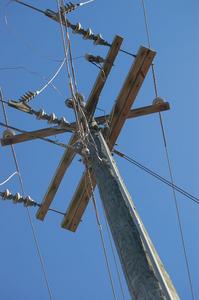 ARRL Chief Executive Officer David Sumner, K1ZZ, and General Counsel Chris Imlay, W3KD, made the rounds of the five FCC Commissioners' offices during November to acquaint them with the ARRL's position on the regulation of interference from Broadband over Power Lines (
ARRL Chief Executive Officer David Sumner, K1ZZ, and General Counsel Chris Imlay, W3KD, made the rounds of the five FCC Commissioners' offices during November to acquaint them with the ARRL's position on the regulation of interference from Broadband over Power Lines (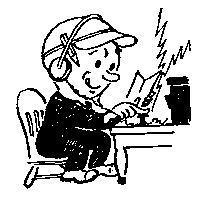
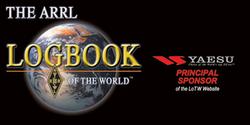 To date, more than 30,000 hams have entered more than 250 million QSOs into Logbook of The World (LoTW), the ARRL's online logging program. At this time last year, 22,959 hams had made just more than 192 million QSOs, marking an upswing in both users and QSOs of about 24 percent. The LoTW system is a repository of log records submitted by amateurs from around the world. When both participants in a QSO submit matching QSO records to LoTW, the result is a QSL that can be used for ARRL award credit. While US amateurs do not need to be members of the ARRL to use LoTW, only members can use LoTW to apply for ARRL awards, such as DXCC and Worked All States (WAS). Some awards, like the Triple Play Award, only use LoTW credits instead of traditional QSL cards (foreign amateurs do not need to be ARRL members to apply for ARRL awards). Read more
To date, more than 30,000 hams have entered more than 250 million QSOs into Logbook of The World (LoTW), the ARRL's online logging program. At this time last year, 22,959 hams had made just more than 192 million QSOs, marking an upswing in both users and QSOs of about 24 percent. The LoTW system is a repository of log records submitted by amateurs from around the world. When both participants in a QSO submit matching QSO records to LoTW, the result is a QSL that can be used for ARRL award credit. While US amateurs do not need to be members of the ARRL to use LoTW, only members can use LoTW to apply for ARRL awards, such as DXCC and Worked All States (WAS). Some awards, like the Triple Play Award, only use LoTW credits instead of traditional QSL cards (foreign amateurs do not need to be ARRL members to apply for ARRL awards). Read more 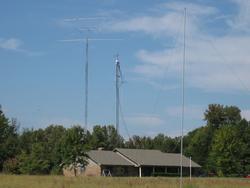
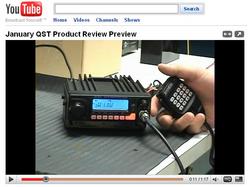
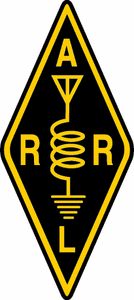 This feature -- including convenient Web links to useful information -- is a concise monthly update of some of the things ARRL is doing on behalf of its members, such as holding elections for the two positions on the ARRL Board of Directors and 10 Section Managers, providing support for affected Sections during Tropical Storm Ida, conducting a frequency measuring test, sending out certificates and plaques for various ARRL contests and more. This installment covers the month of November. Read more
This feature -- including convenient Web links to useful information -- is a concise monthly update of some of the things ARRL is doing on behalf of its members, such as holding elections for the two positions on the ARRL Board of Directors and 10 Section Managers, providing support for affected Sections during Tropical Storm Ida, conducting a frequency measuring test, sending out certificates and plaques for various ARRL contests and more. This installment covers the month of November. Read more 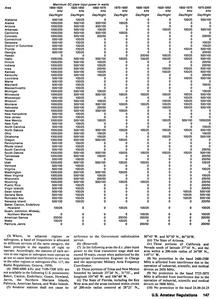
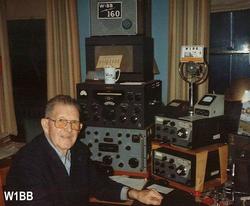
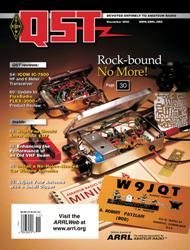 The winner of the QST Cover Plaque Award for October is A. Robert Patzlaff, W9JQT , for his article "The Rockless, a VFO Controlled Low Power Transceiver." Congratulations Robert! The winner of the QST Cover Plaque award -- given to the author or authors of the best article in each issue -- is determined by a vote of ARRL members on the
The winner of the QST Cover Plaque Award for October is A. Robert Patzlaff, W9JQT , for his article "The Rockless, a VFO Controlled Low Power Transceiver." Congratulations Robert! The winner of the QST Cover Plaque award -- given to the author or authors of the best article in each issue -- is determined by a vote of ARRL members on the 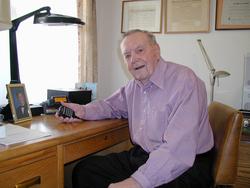
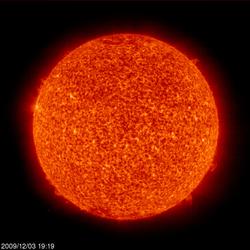
 If you're still looking for that "just right" stocking stuffer for the ham in your life (or maybe you want to treat yourself), look no further than the ARRL Online Store. This holiday season, we are proud to present two new items: the ARRL holiday ornament and the Pocket Ref by Thomas Glover. Check them out
If you're still looking for that "just right" stocking stuffer for the ham in your life (or maybe you want to treat yourself), look no further than the ARRL Online Store. This holiday season, we are proud to present two new items: the ARRL holiday ornament and the Pocket Ref by Thomas Glover. Check them out 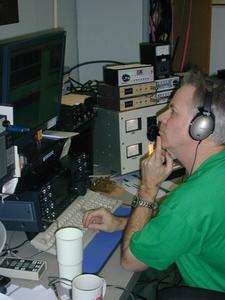
 Registration remains open through Sunday, December 27, 2009, for these
Registration remains open through Sunday, December 27, 2009, for these 







